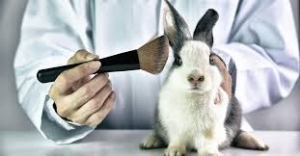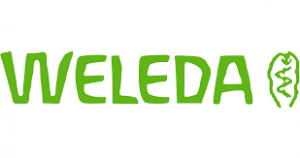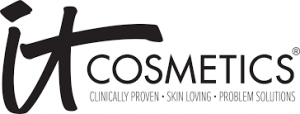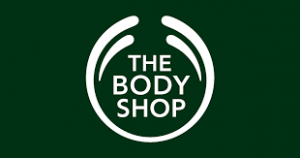Why I decided to choose Cruelty Free.
So, why did I choose to be a cruelty free makeup artist you ask? Here’s why….
Animal cruelty today is just totally unacceptable. The only sure way of eradicating the practice of testing cosmetics and beauty products on defenseless animals is to stop buying from and boycott brands that allow it to happen. I have zero tolerance for it! Hence why I decide I was going to be a cruelty free makeup artist.
Take labels like “organic” and “cruelty-free” for example — these buzzwords are coveted by many shoppers, but the truth is these labels are unregulated by the government. Meaning, you might not be getting what you think you are getting, despite the messaging. This is where real research begins. If you dig deep enough you find out just how corrupt things surrounding these terms really are. My decision was made and there was no back tracking. I WOULD NOT allow products or brands into my kit without knowing their background first. If they were testers in any way, shape, or form, they would be boycotted.
My decision to be a cruelty free makeup artist happened early on in setting up my business. I want to run my business as ethically as possible and for definite, my kit HAS to be a C.F (cruelty free) one. I’m a huge animal lover and I simply can not get on board with the fact that so many animals will be tortured for the sake of me moisturising my skin or smelling nice. In every aspect of my home life from household cleaning to beauty products, and I always purchase from brands that are certified C.F so it just seems logical to make my professional kit follows suit.

The reasoning behind my decision to be a cruelty free makeup artist.
There are so many more reliable ways to ensure that cosmetic products are safe for human use. To use animals who have fur and different cells to humans simply flabbergasts me. It certainly does NOT mean they feel pain any less than we do. In fact, some mammals have more heightened senses and more nerve endings than we do. Becoming a cruelty free makeup artist made me embark on a lot of research.
According to Cruelty Free International, alternative methods to animal testing could include cell cultures, human tissue, computer models, and of course, even human volunteers. With cell cultures, scientists grow human or animal cells in a laboratory, they make smaller, 3D versions of human organs called “organs-on-chips.” This method is particularly helpful in the medical field, because cell cultures help scientists better understand illnesses such as various cancers, AIDs, and more. These cultures also prove crucial in chemical safety testing.
Scientists can also test on human tissue — without needing an alive human volunteer in the room. Human volunteers can donate their tissues — healthy or otherwise — and scientists can use those tissues to better understand both the disease and biology. Human tissues can be donated by someone alive — such as a person who has had surgery, a biopsy, or transplant — or post-mortem. Both acts as more humane alternatives to animal testing.

The horror of testing labs…
Do you think just mice and rabbits are used in these experiments? Well, I will tell you that even today, in 2020, many different species are used around the world. The most common include mice, fish, rats, rabbits, guinea pigs, hamsters. However, farm animals, birds, cats, dogs, pigs, and non-human primates (monkeys, and in some countries, chimpanzees- and we all know THEY can feel!) are all used in labs to test our products.

I am talking about squirting chemicals into eyes or pumping them directly into the blood stream. This causes blindness and severe vomiting. Chemicals doused onto animals shaved skin that cause severe burns and fitting. Poor creatures left to suffer in tiny cages, wallowing in their own excrement. When too old, or no longer serving their purpose (usually because they are too far gone) they are cast outside to bulk waste bins to die alone in agony before being incinerated, some while still alive. The practice is totally and utterly inhumane and my blood boils thinking about it. When did we, as humans decide it was OK to take another life, no matter how small, in such a cruel and insignificant way?
WARNING!
SENSITIVE CONTENT BELOW.
BELOW ARE PHOTOGRAPHS THAT SOME MAY FIND UPSETTING, DISTURBING OR OFFENSIVE.

I desperately want things to change. I want to be one of the people who help make the shift towards boycotting these companies that think animals are not sentient beings and testing is OK. It has also been proven many times over that those experiments that have been successful on animal tissue has in fact been harmful to human tissue so where is the logic in that?!
Isn’t animal testing banned in the U.K?
The testing of cosmetic products and product ingredients on animals was finally banned in the UK in 1998. It took until 2013 to ban it across the EU. This legislation is part of EU Regulation 1223/2009 (Cosmetics Regulation). The ban was created because non-animal methods were developed to test the safety of the cosmetics. However, the practice of using animals for tests is still happening across the globe and some countries are now back tracking and allowing animal testing to commence once more.
Each year, more than 100 million animals—including mice, rats, frogs, dogs, cats, rabbits, hamsters, guinea pigs, monkeys, fish, and birds—are still killed in U.S. laboratories for biology lessons, medical training, curiosity-driven experimentation, and chemical, drug, food, and cosmetics testing. Do not get me started on the numbers in China!
Twenty-two percent of all regulated animals used in labs are guinea pigs, by far the most used animal in research and testing, followed by rabbits (17%) and hamsters (11%). Since 2016, the numbers of dogs in labs increased 12%, rabbits over 16%, and sheep 19%.
How can I choose cruelty free?
I won’t not lie, it is a minefield when trying to figure out which companies test, and which do not. You must do your research, and this is no easy feat. It does depend on where you want to draw the line with your brands though. You see, many brands claim to be C.F nowadays, but you really must look and see who they are owned by and what their stance is on their ingredient suppliers and where they sell to truly know.
Many people are happy to know that the actual brand they purchase from is C.F, this is absolutely fine, and you are still making a difference to a bunny or guinea-pig somewhere so don’t worry. If you are like me however, I like to know that the brand is fully C.F across the board. It is so important to me as a cruelty free makeup artist that I keep my professional kit authentic to C.F.
For example, if a brands are certified as C.F but are owned by a company part of an umbrella that is not. In my opinion, this is still funding a company and this is allowing testing to happen. Especially because their decision is purely down to the financial benefits of selling in the Chinese markets. Personally, I am not OK with this and want my money to go to brands that are actively seeking alternative methods.
e.g.: – M.A.C cosmetics a brand that is C.F but their parent company is Estee Lauder who are NOT.
Urban Decay are C.F but they are owned by a parent company (L’Oréal,notoriously known for animal tests) who are NOT.

The Chinese Market.
The other side of all this is that brands can claim to be C.F but then sell the merchandise on the Chinese market. This will instantly take away the certification because by Chinese law, any products sold in mainland China require animal testing to prove its ‘safety’ for human use.
e.g.: – NARS is a C.F brand but they sell in China so are technically allowing third parties to test their products for them. Therefore they loose their C.F credentials.
This Chinese market point can be misleading on its own though and here’s why. Brands can now use the loophole to sell in China by selling and shipping directly to the consumer via their websites. Under this loophole, no animal tests need to be done and a brand this way can remain certified. Great news for the brand and the bunnies but for the consumer, this is ever more confusing. The research you have to do to confirm this is how they operate is no easy task.
As you can see, it does depend on how far you wish to take your stance on cruelty free products. Either way, whatever your decision, by making a conscious effort to buy C.F you help less animals become lab tests and for this I thank you.
NOTE:- Charlotte Tilbury is no longer classed as C.F. They recently sold out to Puig and this is not a cruelty free parent company. I will now need to source dupe products away from C.T. I adore the Pillow Talk brand as do my brides so I’m gutted! Another brand that has succumbed to money.
What about the ingredients?
Most people will argue that ‘Cruelty Free doesn’t actually exist’. In essence, this is a true statement. Over the last 40 years, it is true, most ingredients have, at some point in time, been tested on animals. The world worked like this back then and we cannot do anything to change the past unfortunately. We can, however, change the future and prevent testing from continuing. We can do this together by refusing to buy from or use brands still allowing this barbaric practice to continue. This is where certification comes in.
Certification.
Cruelty Free International is the most reliable source to provide you with the information about ingredients. They have strict protocols in which brands must adhere to. Brands must prove that their products contain no form of animal testing throughout any stage of their development before they can be given the leaping bunny seal of approval.

Leaping Bunny is the highest cruelty-free standard in the E.U, US, and Canada. The technical name in the US and Canada is Corporate Standard of Compassion for Animals; in the EU, it is the Humane Cosmetics standard.
Because of the logo, the shorthand name is the Leaping Bunny standard.
To get Leaping Bunny certification, companies must meet these criteria:
- Products and the ingredients used in the product must not be subject to tests on animals by anyone (including third parties) at any stage of the product or ingredient development.
- Companies must provide written documentation of this, including from their suppliers and manufacturers.
- Companies must undergo regular audits by Leaping Bunny to confirm the status.
Leaping Bunny is a fixed cut-off date standard. This means each company chooses the cut-off date after which they and their suppliers will halt animal testing. It can be any date up to and including the date a company applies.
For company suppliers, the cut-off applies only to the ingredients supplied to the company. Suppliers may still conduct animal testing on ingredients supplied to non-certified companies. If an ingredient supplier starts testing an ingredient used by a company, the company must find a new source for that ingredient to remain in compliance. Companies are audited regularly for compliance, so this is an exceptionally reliable standard.
How will I know which brands are C.F?
One of the best ways of choosing cruelty free is to check for certifications. Be aware though, some are not legitimate and will just falsely lead you into thinking that they are C.F but really are not.
The two reliable certifications to look out for are: –
- Leaping Bunny (Cruelty Free International)
https://www.crueltyfreeinternational.org/
- PETA (People for the ethical Treatment of Animals)
I personally swear by using Leaping Bunny (PETA has had its own bad press over the years, so I am not fully on board with all their ethics). Leaping Bunny is a hard-working organisation that strives for change. The are always campaigning to get brands to commit to banishing animal tests. They keep their lists up to date and continue battling with China to change their ways. Recently they have had some major break through too, looking at you Covergirl!!
Look for these brand Logo’s on your products. These are two of the globally known and trusted certifications. You know you are in safe hands when labels contain either of these.
Steer clear of logo’s that are not registered like these. It usually points towards the finished product not being tested but this can mean, that the ingredients are subject to tests by their suppliers or that they are allowing third parties to test on their behalf.


Are C.F products Vegan?
In all honesty, No! Just because a product is certified cruelty free does not automatically mean it is also vegan. To be vegan a product must contain no animal by-products at all. Animal by-products include: – albumen (egg white or the protein found in them), beeswax, carmine (crushed cochineal beetle shells), cholesterol, collagen, gelatine (all animal by-products from muscle, tendons and ligaments), or lanolin (found in sheep’s wool).
If you want to exclusively use products that are both vegan and cruelty free, look for products that say both on the label and ensure they are a registered authority. Check the ingredients for the mentioned non-vegan ingredients, just to be safe. As your super friendly cruelty free makeup artist, I will follow up with a blog on organic and vegan products very soon too, another minefield to sift through but I will help guide you.
How can I do my part?
The fact you are here reading this blog is the first step to becoming a NO ANIMAL TESTING ZONE. Becoming aware of the brands that test is a huge turning point into making the change.
Check out your products. Do you already own any brands that are certified? Have you got products that are from brands that test and if so, how do you feel about it? Can you live without your favourite lippy or fragrance? These are all questions you will need to address first.
Once you have decided that you can live without these brands you can find alternatives. There are so many now that are certified. You are then well on the way to becoming cruelty free.
Helpful Information.
The internet has a wealth of information readily available for you to start your research. To get you off to a super easy flying start I can highly recommend checking out two blogs. These two accounts have done all the hard work for you in whittling out the good, the bad and the damn right ugly brands.
Suzana Rose of Cruelty Free Kitty is a wealth of knowledge and reaches out to brands herself for clarification. The brand lists are updated regularly so you can have peace of mind that you are always kept in the loop.
https://www.crueltyfreekitty.com/list-of-cruelty-free-brands/
Another wonderful lady Tashina Combs of Logical Harmony. Again, they regularly reach out to brands and update their lists accordingly. It certainly a big help when choosing your C.F brands.
Conclusion.
So, now you have the information what do you choose to do with it? Will you be joining me in the fight to end animal testing? Maybe you will look to just reduce on some of the notoriously known brands products?
Whatever way you choose to jump on board it will benefit our little furry friends so good on you. After-all, as Tesco quotes ‘EVERY LITTLE HELPS’.
Thank you for reading and if you have any questions please, as always, feel free to message me. I am here to help.
Kay x
Proudly a cruelty free makeup artist always.





















